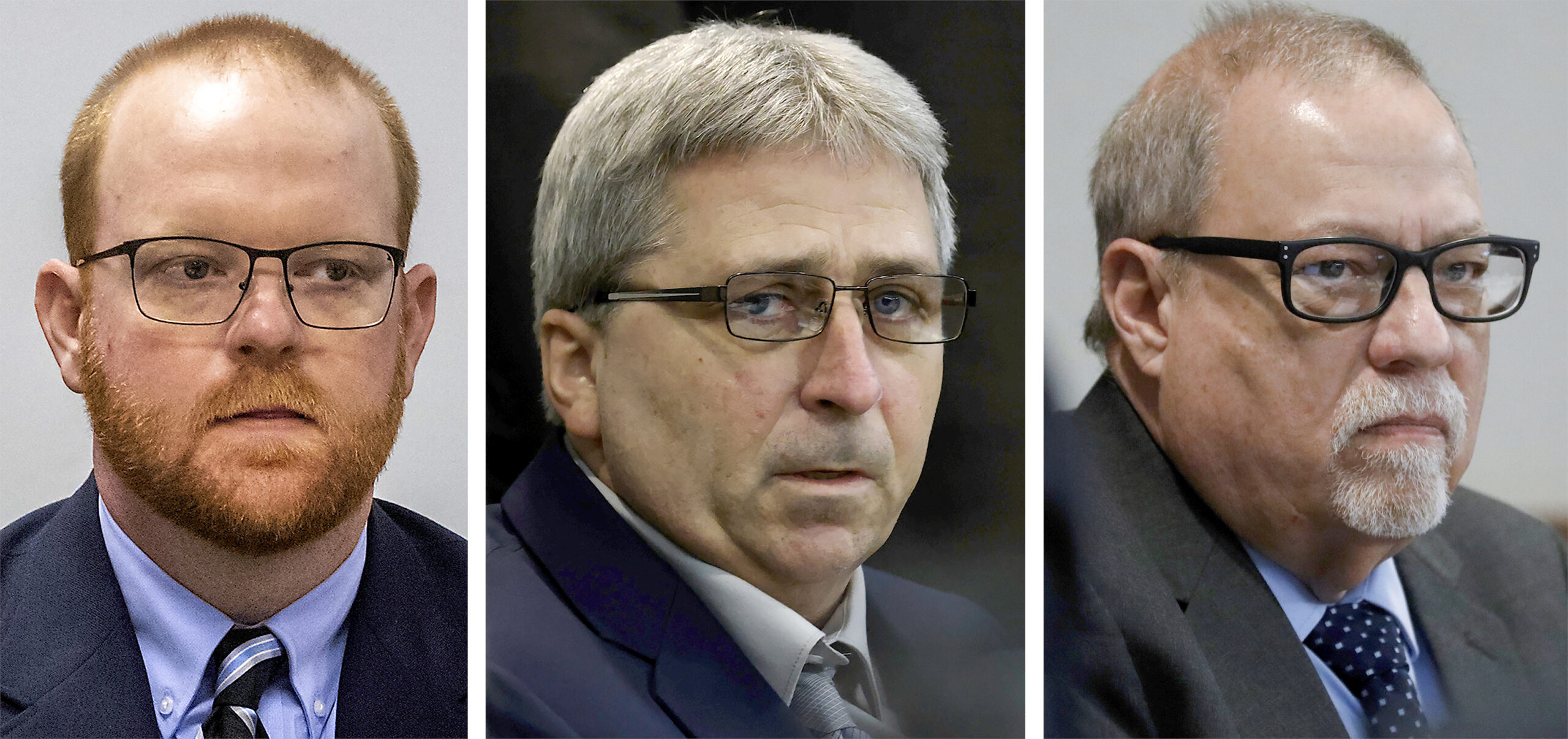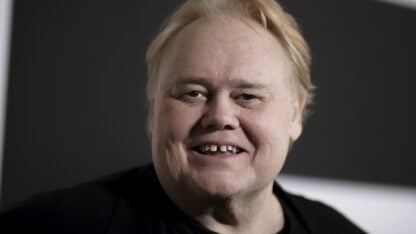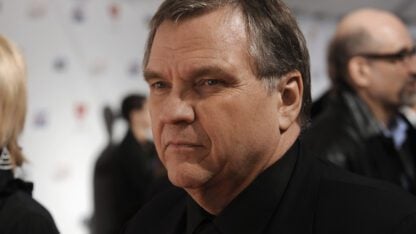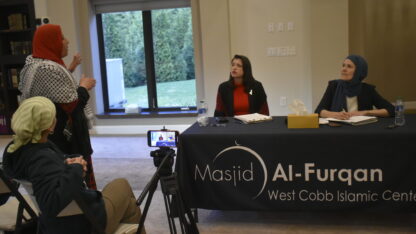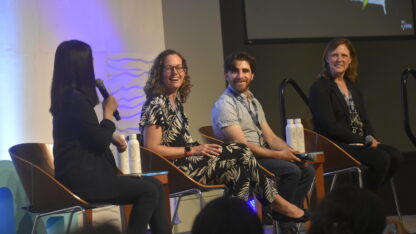Fed Cuts Interest Rates To Prop Up The Slowing Economy
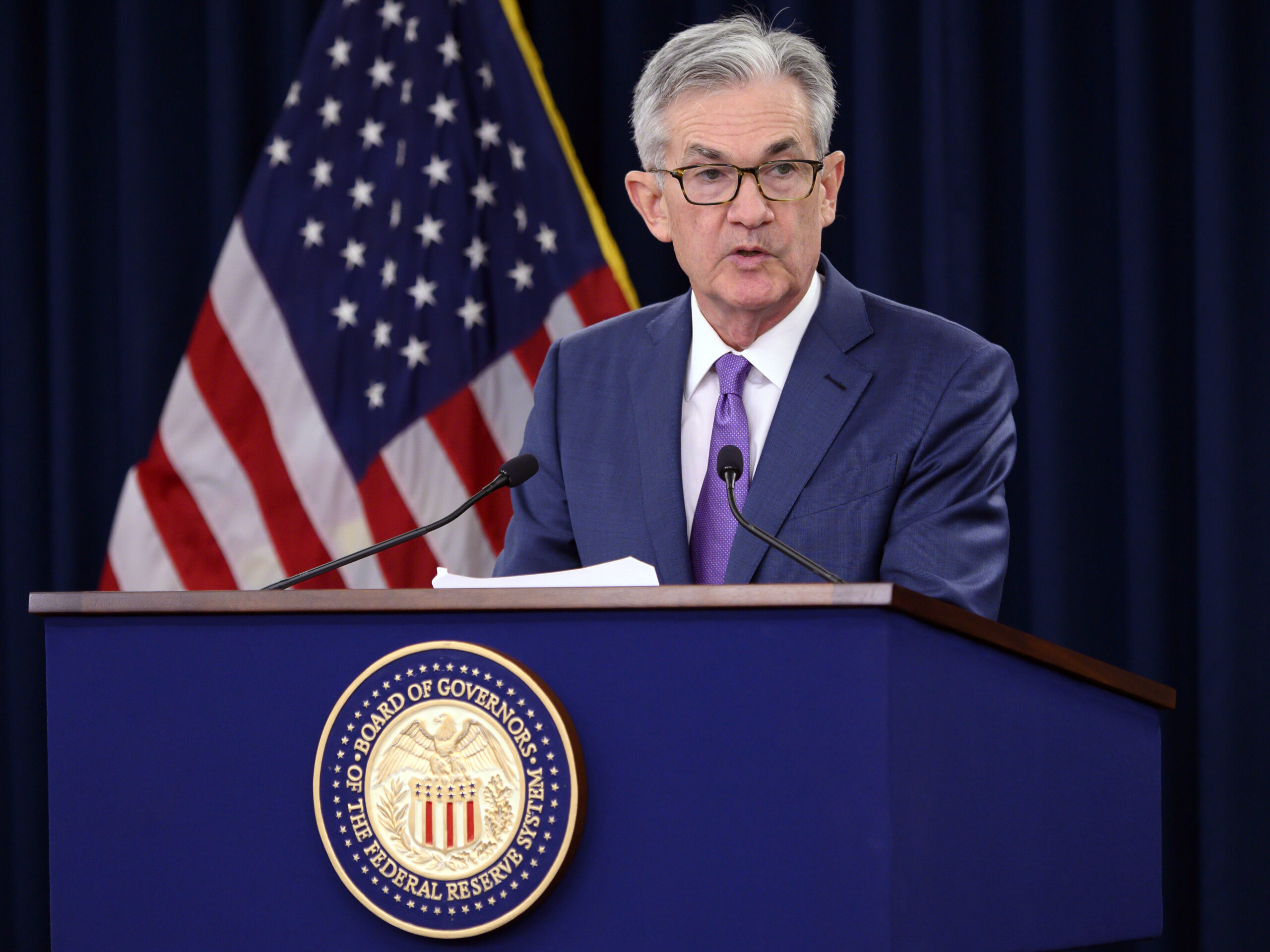
Federal Reserve Chairman Jerome Powell has said he’s not predicting a recession, but the trade war could hurt business spending. “Uncertainty around trade policy is causing some companies to hold back now on investment,” he said this month.
Andrew Caballero-Reynolds / AFP/Getty Images
Updated at 3:18 p.m. ET
The Federal Reserve cut interest rates Wednesday for the second time in seven weeks, in an effort to prolong the decade-old economic expansion in the face of rising headwinds.
The Fed lowered its target for the federal funds rate by a quarter percentage point, to a range of 1.75% to 2%. President Trump, who has been calling for deeper rate cuts, criticized the move as another “fail” by the Fed and major stock indexes fell after the central bank’s announcement.
The move, which had been widely expected by analysts, will trim the cost of borrowing for households and businesses.
“Although household spending has been rising at a strong pace, business fixed investment and exports have weakened,” the Fed noted in a statement. Inflation has also remained stubbornly below the central bank’s 2% target.
The statement noted that consumer spending remains robust and unemployment is near a 50-year low. But it also highlighted uncertainty surrounding the economic outlook.
Fed Chairman Jerome Powell and his colleagues are responding to signs of slowing economic growth, especially in the manufacturing sector, which is sensitive to rising tariffs and slowing growth in overseas markets.
“Uncertainty around trade policy is causing some companies to hold back now on investment,” Powell told an audience in Switzerland this month. “So our obligation is to use our tools to support the economy, and that’s what we’ll continue to do.”
Don’t see the graphic above? Click here.
Powell and his colleagues also pointed to trade uncertainty back in July, when they cut interest rates for the first time in more than a decade. The stock market wasn’t satisfied at the time, in part because Powell seemed to suggest it might be the last rate cut for a while.
Since then, economic indicators have worsened, with the U.S. imposing new tariffs on more than $100 billion in Chinese imports this month and a tariff increase scheduled for mid-October.
Two members of the Fed’s rate setting committee dissented from the cut, preferring to leave rates unchanged. One member voted for a more aggressive cut of a half percentage point.
Many forecasters are anticipating additional rate cuts this year. But even with that extra push from the Fed, economic growth is expected to slow, possibly dipping below 2%.
The trade war is not the only economic speed bump. Growth is also slowing in other countries. The effects of the 2017 tax cut are dwindling. And there’s growing uncertainty about oil prices after the attack over the weekend in Saudi Arabia.
Nervous about a slowing economy, President Trump has been browbeating the Fed to cut interest rates aggressively, to zero or even lower. Trump blasted Wednesday’s quarter-point cut as inadequate.
“Jay Powell and the Federal Reserve Fail Again,” Trump tweeted. “No ‘guts,’ no sense, no vision! A terrible communicator!”
In is appearance in Switzerland earlier this month, Powell insisted that “political factors play absolutely no role in our process. My colleagues and I would not tolerate any attempt to include them.”
The stock market dipped after Wednesday’s rate cut as some investors were apparently disappointed the central bank did not go further. But the drop was modest compared to the selloff following the last Fed meeting in July. An hour after Wednesday’s rate announcement, both the Dow Jones Industrial Average and the S&P 500 were down less than 1%.
While investors and the president are eager for lower rates, it’s not clear they will do much to help the nation’s struggling factories.
“We see the driving force of the slowdown certainly in manufacturing as trade uncertainty,” said Matthew Luzzetti, chief U.S. economist at Deutsche Bank. “Cutting the fed funds rate is not going to be able to fully alleviate that uncertainty.”
Factories and others have cut back on investment, not because it’s too expensive to borrow money, but because they’re not sure they can sell their products. In that environment, Luzzetti said, cutting interest rates can do only so much.
“I think it will help prop up confidence. It will help financial conditions. But it’s going to be difficult to fully offset those effects,” he said.
Mohamed El-Erian, chief economic adviser at Allianz, agreed that cutting interest rates is unlikely to spur business investment.
“Lower interest rates would be like pushing on a string,” he said.
What would help is an end to the trade war. And in recent days there have been signs of a possible thaw in trade relations between the U.S. and China. Trump delayed raising tariffs on Chinese imports by two weeks, and China waived some tariffs on U.S. farm products. Still, it’s not clear a wider trade truce is imminent.
“Right now that’s all talk,” said Kathy Bostjancic, chief U.S. financial economist at Oxford Economics. “We have seen that before. We’ve seen encouraging talk. And then both the markets and business leaders and consumers — everyone — ends up being disappointed. Because not only is there no trade truce. It actually ends up being ratcheted higher.”
